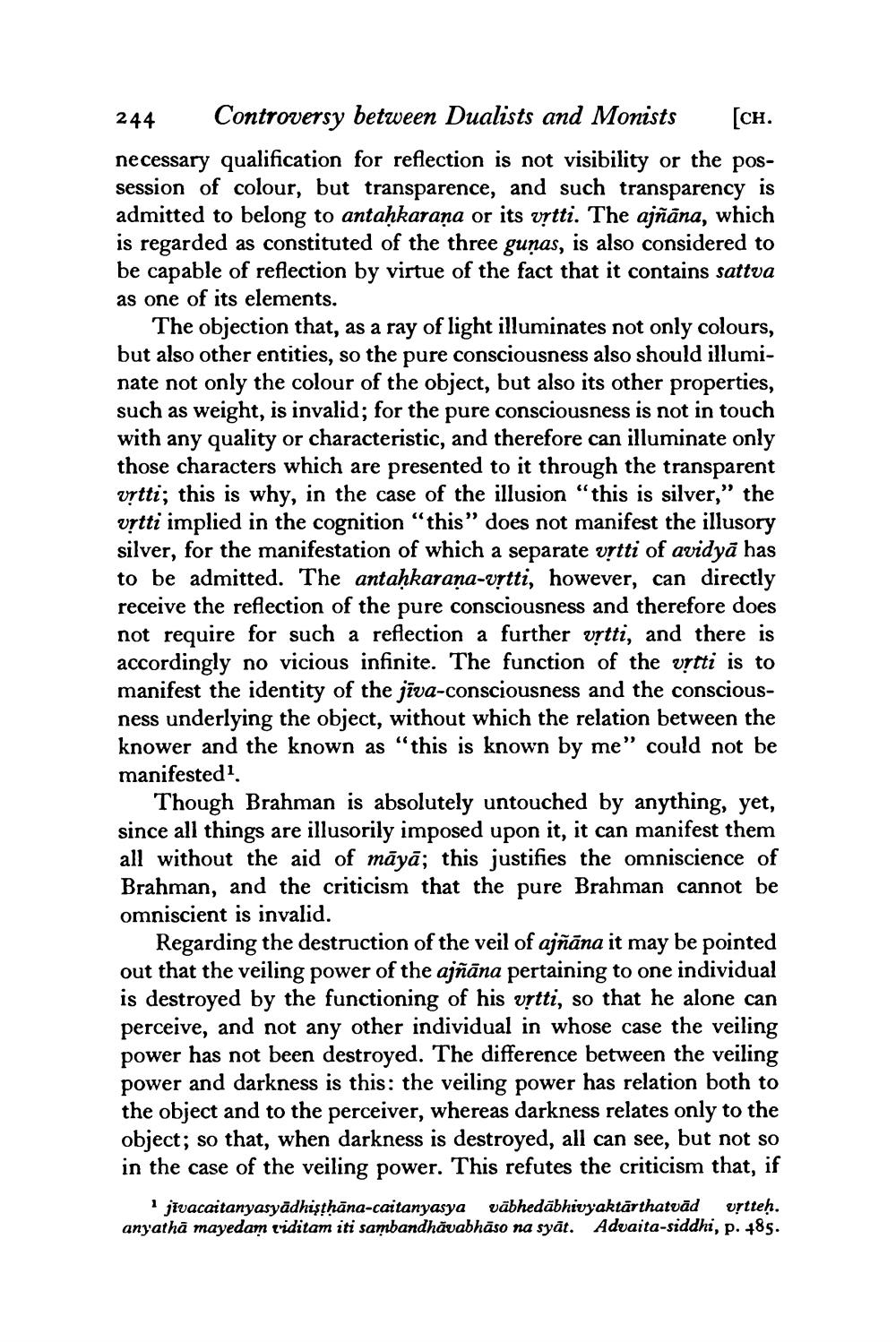________________
244 Controversy between Dualists and Monists [ch. necessary qualification for reflection is not visibility or the possession of colour, but transparence, and such transparency is admitted to belong to antahkarana or its vrtti. The ajñāna, which is regarded as constituted of the three gunas, is also considered to be capable of reflection by virtue of the fact that it contains sattva as one of its elements.
The objection that, as a ray of light illuminates not only colours, but also other entities, so the pure consciousness also should illuminate not only the colour of the object, but also its other properties, such as weight, is invalid; for the pure consciousness is not in touch with any quality or characteristic, and therefore can illuminate only those characters which are presented to it through the transparent vrtti; this is why, in the case of the illusion “this is silver," the vrtti implied in the cognition “this” does not manifest the illusory silver, for the manifestation of which a separate vrtti of avidyā has to be admitted. The antahkarana-vrtti, however, can directly receive the reflection of the pure consciousness and therefore does not require for such a reflection a further vrtti, and there is accordingly no vicious infinite. The function of the vitti is to manifest the identity of the jīva-consciousness and the consciousness underlying the object, without which the relation between the knower and the known as “this is known by me" could not be manifested1.
Though Brahman is absolutely untouched by anything, yet, since all things are illusorily imposed upon it, it can manifest them all without the aid of māyā; this justifies the omniscience of Brahman, and the criticism that the pure Brahman cannot be omniscient is invalid.
Regarding the destruction of the veil of ajñāna it may be pointed out that the veiling power of the ajñāna pertaining to one individual is destroyed by the functioning of his vịtti, so that he alone can perceive, and not any other individual in whose case the veiling power has not been destroyed. The difference between the veiling power and darkness is this: the veiling power has relation both to the object and to the perceiver, whereas darkness relates only to the object; so that, when darkness is destroyed, all can see, but not so in the case of the veiling power. This refutes the criticism that, if
jivacaitanyasyādhişthāna-caitanyasya vābhedābhivyaktärthatvād utteủ. anyathā mayedam riditam iti sambandhăvabhāso na syāt. Advaita-siddhi, p. 485.




